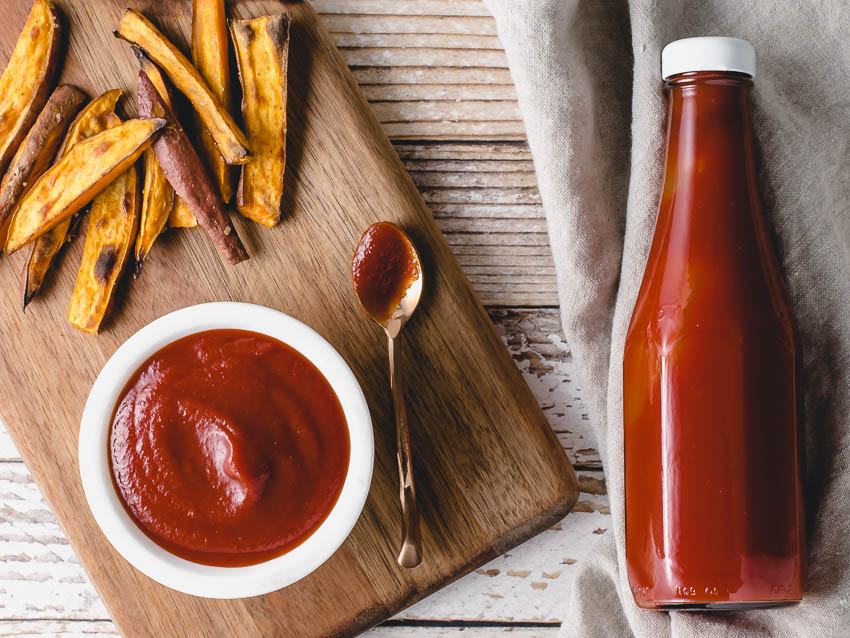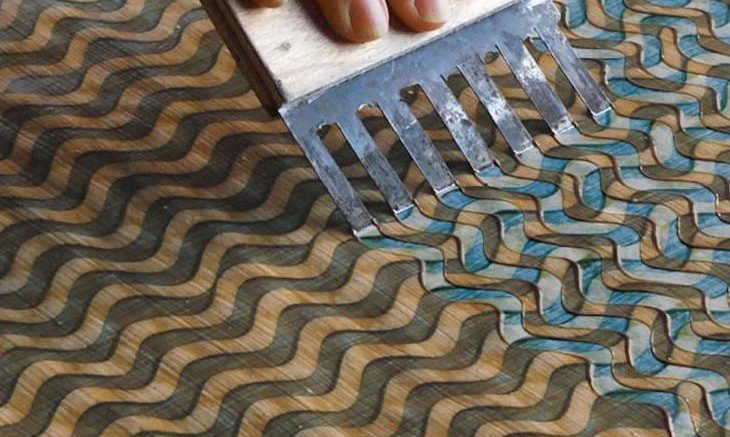Methyl cellulose, a chemical compound known for its edible and nontoxic properties, is a versatile substance that finds use in various industries, including food and art. With its substituted hydroxyl groups and unique properties, methyl cellulose serves as a valuable additive, thickener, and plant-based adhesive. In this article, we will delve into the world of methyl cellulose, exploring its uses in the food industry, its impact on health, and its role as a plant-based adhesive in bookbinding and the art industry.

Introduction to Methyl Cellulose
Methyl cellulose, often referred to by its trade name "Methylcellulose," is a chemical compound derived from cellulose, the main ingredient in plant cell walls. It is a modified form of cellulose, with its hydroxyl groups substituted by methyl groups. This modification imparts distinct properties to methyl cellulose, making it soluble in cold water and forming a clear, viscous solution.
Natural Production and Pure Form
Methyl cellulose is typically produced from cellulose, which can be sourced from wood pulp or cotton fibers. The cellulose is heated with a caustic solution and treated with methyl chloride to introduce methyl groups to its structure. This results in methyl cellulose, which can be obtained in various grades and purities for different applications. When used in the food industry, it must meet strict purity standards to ensure its safety for consumption.
Advancements in Methyl Cellulose Production
The production of methyl cellulose has evolved over time, with advancements in technology leading to more efficient and controlled manufacturing processes. By tailoring production methods and parameters, manufacturers can create methyl cellulose with specific properties, such as viscosity and solubility. This adaptability allows for the customization of methyl cellulose to suit the needs of various industries and applications.
Methyl Cellulose As A Food Additive
One of the primary applications of methyl cellulose is in food production, where it serves as a versatile food additive. It is FDA approved for use in the United States and often appears on food labels. Its nontoxic properties provide a safe option for food manufacturers looking to enhance the texture, stability, and appearance of their products.
Methyl cellulose acts as a thickener, emulsifier, and binder in various foods, including sauces, dressings, and processed meats. Methyl cellulose's ability to create a smooth, uniform texture also improves the mouthfeel of foods, making them more palatable to consumers. Its bulk-forming properties make it a valuable ingredient in products that aim to provide satiety and dietary fiber.
Additional Edible and Nontoxic Properties
Methyl cellulose's presence in food production isn't solely about texture; it also contributes to the stability of various products. By acting as an emulsifier, it helps prevent the separation of oil and water in salad dressings and sauces. This property enhances the shelf life of these products and maintains their visual appeal.

How Methyl Cellulose's Bulk Forming Nature Impacts Health and Nutrition
Methyl cellulose's role as a bulk-forming laxative is noteworthy in terms of its potential health benefits. When used as a medication, it can promote regular bowel movements by adding bulk to stool and making it softer. This property is particularly beneficial for individuals struggling with constipation. However, consumption of methyl cellulose should be monitored as the body's inability to degrade substance led to some people experiencing an increase in inflammation.
As a laxative, methyl cellulose's impact on digestive transit can extend beyond promoting regular bowel movements. The bulk it adds to stool can help prevent diarrhea by absorbing excess water in the intestines. This dual action—softening hard stools and preventing excessive fluid retention—demonstrates how methyl cellulose can contribute to maintaining balanced digestive function. Unlike some other laxatives that might have adverse effects or be habit-forming, methyl cellulose offers a safer option for addressing digestive issues.
Hydroxypropyl Methylcellulose: A Close Cousin of Methyl Cellulose
Hydroxypropyl methylcellulose (HPMC) is a derivative of methyl cellulose that is commonly used in both the food and pharmaceutical industries. Like methyl cellulose, HPMC is soluble in cold water and forms a gel-like substance when mixed with liquids. In food production, it serves as a thickener and stabilizer, while in pharmaceuticals, it can be used to create controlled-release drug formulations.
Methyl Cellulose's Experimental Properties
Methyl cellulose's unique properties also make it an interesting substance for experimentation in various fields. Its solubility in water allows for easy preparation, and its gel-like consistency offers special effects in art projects. Artists have used methyl cellulose to create textured surfaces, as it can be mixed with pigments and applied to canvases or other surfaces. Its ability to alter viscosity and form when mixed with other compounds makes it a valuable tool for artists seeking innovative techniques.
Methyl Cellulose as a Plant-Based Adhesive
Beyond its role in the food industry, methyl cellulose's properties extend to the world of art and craftsmanship. It serves as a natural, plant-based adhesive that finds applications in bookbinding, paper conservation, and various art projects. Its adhesive properties are activated when it is mixed with water, forming a gel-like substance that adheres well to paper and other materials.
Unlike traditional glues that might contain caustic chemicals, methyl cellulose offers an eco-friendly and non-toxic alternative. If you are seeking an eco-friendly adhesive, you can buy methyl cellulose online from Natural Earth Paint Canada.
Benefits of Plant-Based Adhesives
The use of plant-based adhesives like methyl cellulose offers several advantages over synthetic alternatives. Firstly, these adhesives are environmentally friendly, as they are derived from renewable resources and do not contribute to harmful emissions. Additionally, they are non-toxic, making them safe for artists, craftsmen, and conservators to use without the risk of inhaling or coming into contact with harmful chemicals.
Methyl cellulose's emergence as a plant-based adhesive highlights the ongoing search for eco-friendly alternatives to traditional glues. Moreover, plant-based adhesives tend to age more gracefully, preserving the integrity of artworks and artifacts over time.
Plant-Based Adhesives and Sustainability
The shift toward sustainable practices has led to a renewed interest in plant-based products across industries. Methyl cellulose's application as a plant-based adhesive aligns with this trend, offering artists and conservators an environmentally friendly alternative to synthetic adhesives. The extraction of cellulose from renewable sources and the non-toxic nature of methyl cellulose contribute to reducing the environmental impact of art projects and conservation efforts.
Adhesive Applications in the Art Industry
In the art industry, methyl cellulose's adhesive properties offer artists a versatile tool for creative expression. It can be used to adhere various materials, including paper, textiles, and even three-dimensional elements. When mixed with pigments, methyl cellulose can create unique textures and effects on surfaces, expanding the artistic palette and enabling artists to experiment with new techniques.

Wallpaper Paste and Beyond
Methyl cellulose's adhesive qualities extend to practical applications like wallpaper paste. Its ability to bond to surfaces without causing damage or staining makes it a popular choice for adhering wallpaper. Additionally, its reversible nature ensures that wallpapers can be removed without leaving a trace, preserving the underlying surface. This property makes methyl cellulose a favored option for interior decorators and homeowners seeking a hassle-free solution for wallpaper installation and removal.
Preparing Methyl Cellulose For Cold Water Activation
One of the notable features of methyl cellulose is its ability to dissolve in low temperature water. This property simplifies its application as an adhesive in art projects and bookbinding. Unlike some traditional adhesives that require heating or the use of caustic solutions, methyl cellulose can be prepared by mixing it with cold water, making it safer and more convenient to work with. This quality also contributes to its suitability for delicate materials that might be damaged by heat.
The process of preparing methyl cellulose for use in art and conservation projects is straightforward. The adhesive is typically available in powder form, and it can be mixed with chilled water to create a gel-like substance. This cold water activation minimizes the risk of damaging delicate materials during the adhesive application process, ensuring that artworks and artifacts are treated with care and precision.
Methyl Cellulose in Bookbinding
In the realm of bookbinding and paper conservation, methyl cellulose has gained popularity as a reliable adhesive. It is often used to attach book covers, repair torn pages, and consolidate delicate artworks on paper. The adhesive's reversible properties make it a preferred choice for conservators, as it can be easily removed without causing damage to the original material. Additionally, methyl cellulose's ability to bond different types of paper and materials makes it an ideal binder for books and manuscripts.
Artistic Applications of Methyl Cellulose
Beyond bookbinding, methyl cellulose's adhesive properties find use in a wide range of artistic endeavors. It is employed to create collage artworks, adhere delicate materials, and achieve specific visual effects. The adhesive's compatibility with various pigments and its ability to alter viscosity make it a versatile tool for artists seeking to push creative boundaries. Its non-toxic nature also makes it a suitable choice for workshops and educational settings.
Methyl Cellulose and Water Retention
In art conservation, the reversible nature of methyl cellulose's adhesive properties is crucial. It allows conservators to attach delicate materials without causing permanent damage. When the adhesive is applied to paper or canvas, it retains water, which can be reactivated to dissolve the adhesive if needed. This "reversibility" ensures that artworks and artifacts can be preserved for generations to come without irreversible alterations.
The Role of Methyl Cellulose in Book Conservation
In the realm of bookbinding and paper conservation, methyl cellulose plays a vital role in repairing and preserving valuable documents. The adhesive's ability to create strong bonds while remaining reversible allows conservators to repair torn pages, reattach loose covers, and consolidate fragile materials. This delicate balance between adhesion and reversibility ensures that historical artifacts can be preserved without compromising their integrity.
Methyl Cellulose's Water Retention in Paper Conservation
Conservators often appreciate the water-retaining properties of methyl cellulose during paper conservation. When working with delicate or brittle materials, the adhesive's ability to hold water can prevent excessive drying, which could lead to further damage. By maintaining the moisture content of materials, conservators can manipulate them more easily and ensure a smoother restoration process.
Methyl Cellulose's Role in Art Restoration
Art restoration requires meticulous attention to detail and an understanding of materials and their interactions. Methyl cellulose's reversible adhesive properties make it a valuable tool for conservators, allowing them to repair and preserve delicate artworks without compromising their original state. Whether reattaching fragments or stabilizing fragile materials, conservators rely on methyl cellulose's properties to ensure the longevity of artistic treasures.
Methyl Cellulose's Role in Fiber Arts
Fiber artists often utilize methyl cellulose as a tool for manipulating textiles and fibers. When mixed with water, methyl cellulose can create a paste that is applied to fabrics, enabling artists to shape and mold textiles into desired forms. This technique is particularly useful for creating sculptural textile art, as the paste provides temporary support that can be removed once the desired shape is achieved.

Methyl Cellulose and Special Effects in Art
Artists and set designers often seek unconventional materials to achieve special effects in their work. Methyl cellulose's ability to alter viscosity and form when mixed with pigments offers a unique opportunity for experimentation. By adjusting the concentration of methyl cellulose and combining it with various pigments, artists can create textures, gradients, and patterns that add depth and visual interest to their creations.
Methyl Cellulose in Entomology
Methyl cellulose is also valued in the field of entomology, the study of insects. Scientists use it as a medium for mounting delicate insect specimens for display or research purposes. Its water-retaining properties ensure that specimens are well-preserved without causing damage to their delicate structures. This technique allows researchers to study insects' anatomical details and preserve their integrity over time.
Methyl Cellulose's Role in Textile Printing
Textile printing involves transferring colors and patterns onto fabrics using various techniques. Methyl cellulose can play a role in this process by acting as a thickener for printing pastes and dyes. By controlling the viscosity of these mixtures, textile printers can achieve precise and consistent results, ensuring that printed designs adhere well to fabrics and maintain their vibrancy.
Compatibility with Natural Dyes
Methyl cellulose's compatibility with water-based mediums and natural dyes makes it a suitable adhesive for projects involving these materials. Unlike some synthetic adhesives that might react unfavorably with certain dyes, methyl cellulose's non-toxic nature minimizes the risk of color bleeding or alteration. This makes it a preferred choice for artists who prioritize the preservation of colors and pigments in their work.
Methyl Cellulose and the Art of Reparation
In the world of art restoration, the use of methyl cellulose is an art form in itself. Conservators must delicately balance the adhesive's properties to repair and preserve artworks without leaving visible traces. This art of reparation requires expertise, precision, and a deep understanding of materials. Through meticulous application and attention to detail, conservators ensure that the spirit of the original artwork remains intact for future generations to appreciate.
Limitations and Considerations of Methyl Cellulose
While methyl cellulose offers numerous benefits, it's important to acknowledge its limitations. Its viscosity and adhesive strength might not be suitable for all applications. For instance, in art projects requiring exceptionally strong bonds, other adhesives might be more appropriate. It's crucial to choose the right adhesive for each project's specific requirements, considering factors such as material compatibility, longevity, and reversibility.
Conclusion: A Dynamic Compound with Diverse Applications
Methyl cellulose's journey from the cellulose-rich walls of plant cells to its various roles in food, art, and beyond showcases its dynamic and adaptable nature. Its soluble properties, non-toxicity, and ability to enhance textures and adhesion make it a valuable ingredient and tool across industries.
Whether improving the texture of sauces, preserving valuable artworks, or adding innovative effects to creative projects, methyl cellulose continues to contribute to the advancement of science, technology, and artistic expression. Its impact on health, environment, and aesthetics solidifies its position as a compound of remarkable versatility and significance.
